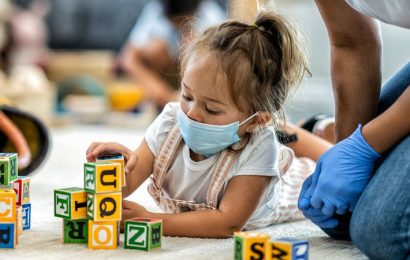
Children and adolescents (aged 0-18 years) with disability experience physical, sexual, and emotional violence, and neglect at considerably higher rates than those without disability, despite advances in awareness and policy in recent years, according to a systematic review and meta-analysis of studies involving more than 16 million young people from 25 countries conducted between 1990 and 2020, published in The Lancet Child & Adolescent Health journal.
Young people with mental illness and cognitive or learning disabilities (eg, attention deficit hyperactivity disorder and autism) are especially likely to experience violence, and overall, children with disabilities are more than twice as likely to experience violence compared to those without disabilities, which can have a serious and long-lasting impact on their health and wellbeing.
The authors note that whilst the study provides the most comprehensive picture of the violence experienced by children with disabilities around the world, there is a scarcity of data from low-income and middle-income countries (LMICs), especially in Southeast and Central Asia and Eastern Europe.
Nevertheless, the authors say that the findings highlight the urgent need for collaborative efforts by governments, health and social care workers, and researchers to raise awareness of all forms of violence against children with disabilities and to strengthen prevention efforts.
“Our findings reveal unacceptable and alarming rates of violence against children with disabilities that cannot be ignored”, says Professor Jane Barlow from the University of Oxford, UK who co-led the study. “All children have a right to be protected from violence which has long-lasting social, health and economic consequences, including higher school drop-out rates, worse job prospects, and a higher risk of mental illness and chronic diseases in later life. We must urgently invest in services and support that address the factors that place children with disabilities at heightened risk of violence and abuse, including caregiver stress, social isolation and poverty.”
An estimated 291 million children and adolescents have epilepsy, intellectual disability, vision impairment, or hearing loss—representing about 11% of the total child and adolescent population globally. Many more have other physical and mental disabilities. The vast majority of children with disabilities—more than 94%—live in LMICs where multiple risks converge. Stigma, discrimination, lack of information about disability, and inadequate access to social support for carers contribute to the higher levels of violence experienced by children with disabilities. This can be further exacerbated by poverty and social isolation. The unique challenges faced by children with disabilities, such as the inability to verbalize or defend themselves, can also make them a target of violence.
In 2012 a systematic review, published in The Lancet, estimated that more than a quarter of children with disabilities in high-income countries experienced violence, and that their odds of experiencing violence were more than three times higher than their non-disabled peers.
This new analysis includes a larger number of studies from a wider geographical area, more types of violence (eg, peer bullying and intimate partner violence), and a wider range of disabilities (physical limitations, mental disorders, cognitive or learning disabilities, sensory impairments and chronic diseases), as well as using updated methods to provide current global estimates of violence against children with disabilities, up to September 2020. The new estimates suggest that one in three children with disabilities are survivors of violence and that they are twice as likely to experience violence as non-disabled children.
The researchers did a systematic review and meta-analysis of all observational studies measuring violence against children with disabilities published in 18 English language databases and three regional Chinese databases between 1990 and 2020. Data were analyzed for 98 studies involving over 16.8 million children (aged 0-18 years), including 75 studies from high-income countries and 23 studies from seven low-income and middle-income countries.
Analysis of data from 92 studies looking at prevalence found that the overall rates of violence varied by disability and were slightly higher among children with mental disorders (34%) and cognitive or learning disabilities (33%) than for children with sensory impairments (27%), physical or mobility limitations (26%), and chronic diseases (21%).
The most commonly reported types of violence were emotional and physical, experienced by about one in three children and adolescents with disabilities. The estimates suggest that one in five children with disabilities experience neglect and one in ten have experienced sexual violence.
The study also draws attention to high levels of peer bullying, with almost 40% of children with disabilities estimated to have experienced bullying by their peers. In-person bullying (physical, verbal, or relational acts, such as hitting and kicking; insults and threats; or social exclusion) is more common (37%) than cyberbullying (23%).
In general, children with disabilities living in low-income countries experienced higher rates of violence than those in high-income countries—possibly as a result of limited access to prevention and support services, lower levels of legal protection, and attitudes and norms that stigmatise people with disabilities and lead to greater social tolerance for violence.
“Violence against children with disabilities is preventable. These children must be given the right life chances now”, says co-lead author Dr. Zuyi Fang from Beijing Normal University in China. “The UN Sustainable Development Goals aim to end all forms of violence against children by 2030. Achieving this will require political leaders, practitioners, and researchers to work together to implement what we already know works to prevent violence such as evidence-based parenting interventions, while developing and evaluating effective community, school-based, and on-line interventions that target specific forms of violence.”
She adds, “It is clear that low-and middle-income countries, in particular, face additional challenges, fuelled by complex social and economic drivers, and must establish legal frameworks to prevent violence, alongside increasing the capacity of health and social service systems to address the complex needs of children with disabilities and their families. More robust research is also needed in economically disadvantaged populations and to investigate violence perpetrated by intimate partners and authority figures.”
The authors acknowledge some limitations with the study. Firstly, despite the increased number of studies compared with the 2012 review, they were only 23 studies from seven LMICs—which may limit the conclusions that can be drawn. They also highlight that different contexts, methodological features, types of disability, and child characteristics (eg, gender and age) could have influenced the estimates. In addition, varying definitions and measures of violence and disability made it difficult to compare studies, while less than 40% of studies controlled for confounding factors or used representative samples, making it difficult to establish whether the high levels of violence were due to disability or other factors. Finally, because the study is largely based on child- and caregiver-reporting, and given the sensitive and stigmatized nature of violence and cognitive limitations, the true prevalence of violence could be even higher.
Source: Read Full Article


